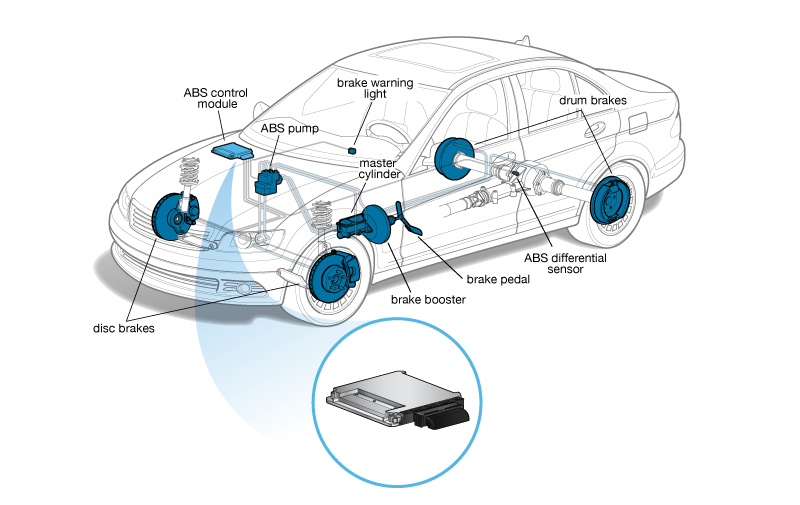ABS system in cars
ABS system in cars
Historical overview of abs system
French engineer Gabriel Fozan was the first to invent the Abs system in 1929, purely mechanically, and was used for aircraft at the time and then was tested on the first car was Ferguson.
The two companies Mercedes and Porsche developed the system to work as it is in its current form and spread more widely in the mid-nineties and the sixties of the last century.
What is the ABS system in cars?
The anti-lock braking system is abbreviated to ABS, a safety system that prevents the car’s wheels from rotating during braking. The driver will press on the brake instead. The system automatically prevents the steering of the vehicle during severe braking. It calms the rotation of the wheels so that the connection between the frame and the ground remains intact and allows the vehicle to be guided even during braking until it stops.
The system also allows the tire rotation of the driver to maintain steering of the vehicle, by preventing the sliding of the wheels and allow it to continue interaction and friction with the road surface as directed by the driver. The ABS improves vehicle control and reduces downtime on dry and slick surfaces. But it may increase the braking distance on soft surfaces such as snow and gravel with improved vehicle control.
ABS system forms
Different types of ABS system vary depending on the type of engine used in the vehicle in terms of the number of valves and the number of speed sensors, as follows:
Four channel system and four sensors:
This is one of the best types, because it provides individual wheel control to ensure maximum braking power, thanks to having four-wheel speed sensors and a separate valve for each.
Three channel system and three sensors:
This type of system fully controls the front wheels of the vehicle, with each wheel having a separate valve and a special sensor, while the two wheels have a joint valve and sensor in between. This may result in inefficient control of their brakes as a result of the possibility of a wheel being locked during the stop.
One channel system and one sensor:
This system is similar to the three-way control system that includes one valve for both rear wheels, which may result in inefficient shut-off. It also has one sensor that can be found near the electrical connection at the point on the vehicle’s rear axle.



